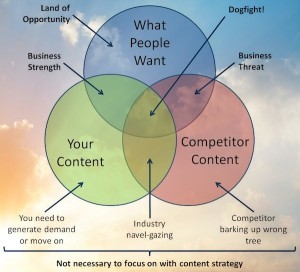Content marketing is one of the most vital components of marketing strategy today.
U.S. marketers spent $10 billion on content in 2016, and 68 percent rank it among their top five priorities, according to Forrester research.
But despite the priority placed on content marketing, many companies aren’t tracking the performance of their content.
Thirty-seven percent of content marketers never complete a content audit, a survey of 10,030 marketing professionals found. This helps explain why 95 percent of content fails to generate engagement, as Beckon research shows.
Investing in content marketing without auditing your performance risks wasting money. It also robs you of the opportunity to improve your marketing efficiency and boost your return on investment.
Here are five best content auditing practices to help you get the most out of your marketing efforts.
Determine the Goals of Your Content Audit
When you are done with your content audit, you should have a list of all your content pieces’ URLs and titles, along with an evaluation of each piece’s performance and a determination of which steps to take next.
Possible next steps can include leaving content as is, removing it or updating it.
Before conducting a content audit, you should first clarify the purpose of your audit, advises Single Grain CEO Eric Siu.
Content audits are usually undertaken for two primary reasons:
- One reason is to evaluate your site’s search engine optimization performance by comparing your page rankings for your target keywords against on-page SEO factors to make improvements. In some cases, you might be evaluating your site’s SEO to remove technical problems such as broken links.
- The other major reason is to evaluate content marketing performance factors that measure user engagement, such as page visit metrics and social shares. You can also include both of these goals in your content audit.
Take a Content Inventory
With your goals in mind, the next step is to take a thorough content inventory.
Crawl all indexable content, or if you are doing a technical SEO audit, all crawlable content, says Inflow director of marketing Everett Sizemore.
This will provide you with basic information about your pages such as URLs, titles, descriptions and on-page metrics. You should then gather any additional metrics you need, such as information about internal links, backlinks and traffic.
Prepare for Ecommerce Optimization
Tools such as URL Profiler can assist you in collecting the data you need and exporting it into a spreadsheet. You’ll also find it easier to take content inventory if you use a good ecommerce content management system to upload and manage your content.
For instance, Content Analytics provides online retailers with a single interface for managing product page content and ecommerce product page optimization across sites, while also providing you with built-in analytics tools to see how your pages are performing.
Display Your Data as Actionable Information
The next step is to take your raw data and display it as actionable information.
This involves supplementing your data with a performance evaluation for each piece of content, along with a prescription of what next steps should be taken to improve, apply or eliminate that content.
Do this via your content management system or on a spreadsheet or dashboard tool.
Apply Your Findings
With your data displayed in a useful format, you can begin reviewing individual items and determining what next steps to take.
For example, you might begin by looking for SEO issues that could cause an algorithmic or manual penalty to be applied, such as quality, duplicate content or relevancy issues.
You can then present your recommendations in a report for your team to take action on.
To get the most out of your content audit, consider auditing your competitions’ sites as well. This can help you identify where your competition is outperforming you, as well as any weaknesses they have that might represent opportunities for you.


